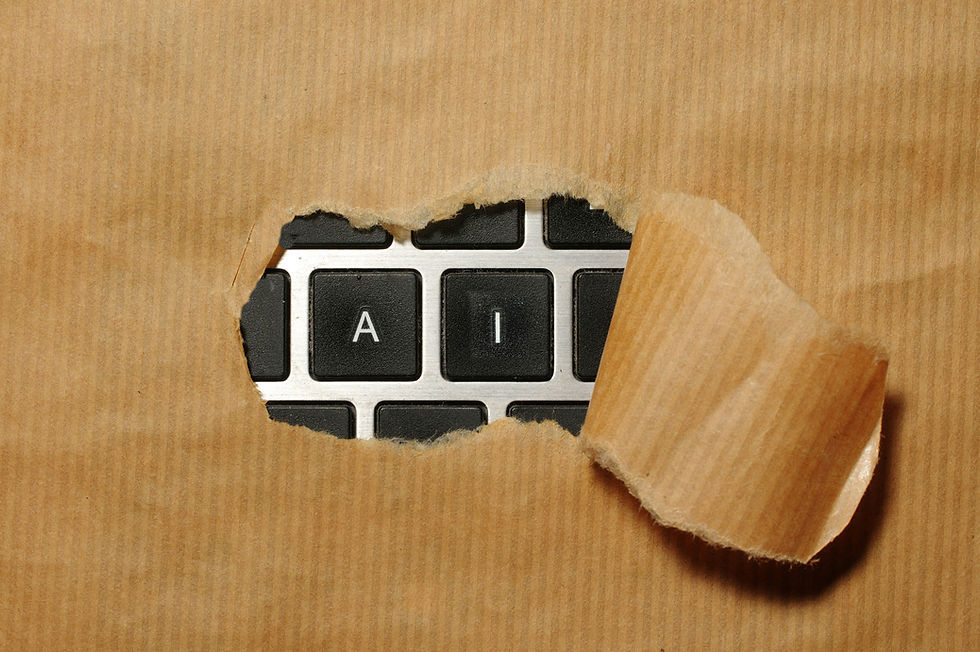AI: A digital revolution in poverty alleviation
- Editorial Team SDG1

- Mar 13
- 3 min read
Updated: Mar 24

Editor’s Note:This article has been inspired by Carrie Arnold’s insightful piece published on Nature.com.
Poverty remains one of the most pressing global challenges, with over 700 million people living in extreme poverty, surviving on less than $2.15 per day, according to the World Bank. Achieving sustainability, reducing economic inequality, and fostering justice and strong institutions are integral to the United Nations' Global Goals. However, identifying and delivering support to those in need has historically been slow, expensive, and incomplete.
Artificial intelligence (AI) is now emerging as a potential game-changer in this fight, offering innovative solutions to accelerate relief efforts while improving targeting and effectiveness.
AI-driven poverty mapping: A transformative tool
Traditional poverty alleviation efforts rely on in-person surveys, which are labour-intensive, time-consuming, and difficult to execute in remote areas. AI presents an alternative by analysing data from satellite imagery, mobile networks, and economic indicators to estimate poverty levels in real time. This technology was put to the test in Togo during the COVID-19 pandemic through a project called Novissi, which means "solidarity" in the local Éwé language.
In collaboration with the University of California, Berkeley, and the NGO GiveDirectly, the Togolese government leveraged AI to identify impoverished individuals and provide direct mobile cash transfers of approximately $10 every two weeks. This innovative approach allowed aid to reach those in greatest need without requiring on-the-ground assessments.
AI versus traditional poverty measurement
The challenge of defining poverty has persisted for centuries. Early efforts, such as Charles Booth's poverty maps of London (1886-1903) and Seebohm Rowntree's 1901 study in York, laid the foundation for modern poverty metrics. However, widely used poverty thresholds, such as the dollar-per-day measure, provide only a partial picture of deprivation.
Recognising the need for a more nuanced approach, Sabina Alkire of the Oxford Poverty and Human Development Initiative developed the Multidimensional Poverty Index (MPI) in 2008. Unlike simplistic income-based models, the MPI evaluates ten indicators, including nutrition, school attendance, and access to clean water, to provide a broader understanding of poverty.
The promise and pitfalls of AI in poverty relief
AI-driven methods have the potential to revolutionise poverty measurement by incorporating big data, machine learning, and remote sensing technologies. Researchers at the Stanford Environmental Change and Human Outcomes Lab have successfully trained AI models to predict economic conditions by analysing satellite images of infrastructure, farmland, and night-time lighting. The World Bank has also employed AI to forecast food crises and conflicts, enabling proactive intervention.
However, AI is not without its challenges. Critics, such as Ola Hall of Lund University, warn that algorithmic bias could lead to racial, gender, or socio-economic disparities in aid distribution. Furthermore, individuals without digital footprints, such as those lacking mobile phones or permanent addresses, risk being excluded from AI-based relief programmes.
The integration of AI in poverty alleviation must be guided by ethical principles, global collaboration, and inclusive policymaking. Organisations such as the United Nations, World Bank, and research institutions play a crucial role in ensuring that AI tools are transparent, accountable, and fair. Strengthening peace and justice, fostering economic equality, and advancing climate action require robust cooperation between governments, NGOs, and the private sector.
Future outlook: AI and the evolution of poverty relief
As AI technology continues to evolve, it is imperative to address concerns about data privacy, equity, and human oversight. Future advancements in science could refine AI models to provide even more precise poverty assessments, making aid delivery more efficient and impactful. The SDGs call for global efforts to eradicate extreme poverty by 2030, and AI may prove to be a powerful ally in reaching this goal.
To learn more about global efforts to combat poverty and ensure sustainability, visit organisations such as the Oxford Poverty and Human Development Initiative, GiveDirectly, and the United Nations Development Programme. The intersection of AI and poverty relief holds immense potential, but it must be implemented with fairness, inclusivity, and accountability at its core.



